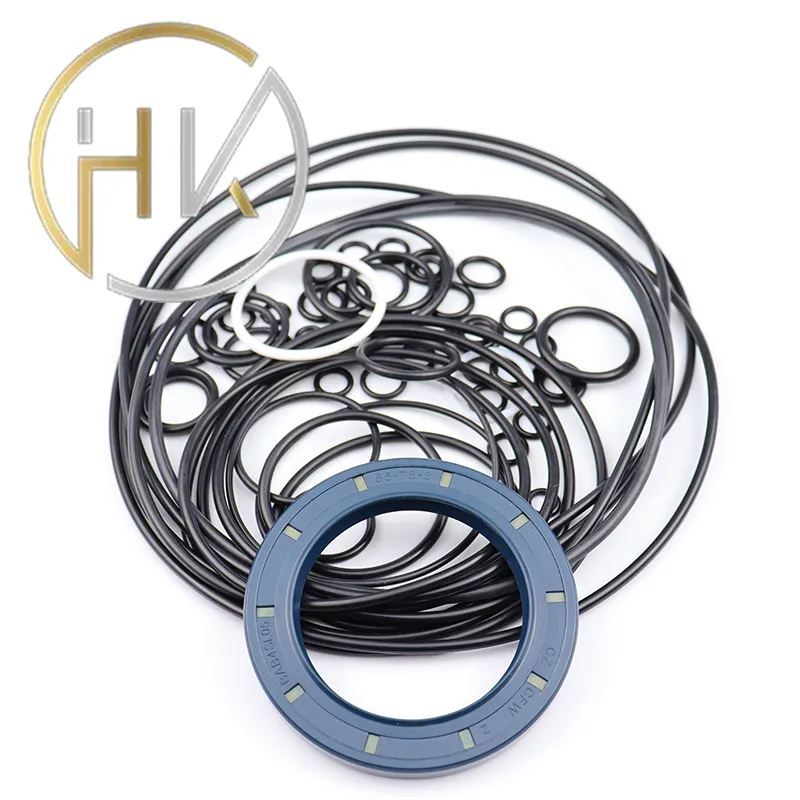កញ្ញា . 23, 2024 04:38 Back to list
hydraulic cylinder dust seal
Importance of Hydraulic Cylinder Dust Seals
Hydraulic cylinders are integral components in a wide array of machinery and applications, playing a crucial role in converting hydraulic energy into mechanical movement. However, their efficiency and longevity are significantly influenced by the integrity of their seals, particularly dust seals. Dust seals are essential for preventing contaminants from entering the hydraulic system, thereby preserving the fluid's purity and the cylinder's operational efficiency.
Functionality of Dust Seals
The primary function of a dust seal is to protect the hydraulic cylinder's inner components from dirt, dust, and other debris. These contaminants can cause wear and tear on seals and cylinder walls, leading to potentially catastrophic failures and costly downtime. Dust seals create a barrier that prevents particles from infiltrating the hydraulic system, thus ensuring that the hydraulic fluid remains clean and the internal components function optimally.
Moreover, dust seals help maintain the pressure within the cylinder. By preventing outside elements from entering, these seals ensure that the hydraulic fluid can operate at the necessary pressure levels without leaks. This is vital for ensuring the hydraulic system operates smoothly and safely, especially under high-pressure conditions common in various industrial applications.
Types of Dust Seals
hydraulic cylinder dust seal

There are several types of dust seals used in hydraulic cylinders, each designed for specific applications and environments. Common materials include rubber, polyurethane, and metal, each offering different levels of durability and resistance to environmental factors. The choice of material often depends on the operational conditions, such as temperature variations, exposure to chemicals, and the presence of abrasive materials.
One popular design is the lip seal, which consists of a flexible lip that creates a tight fit against the moving rod. This design not only provides excellent sealing performance but also offers a low-friction operation, enhancing the cylinder's overall efficiency. Additionally, wiper seals can be incorporated in conjunction with dust seals. Wiper seals serve a dual purpose they remove external contaminants while keeping the dust seal clean, thus extending the lifespan of both seals.
Maintenance and Replacement
To ensure optimal performance, regular inspection and maintenance of dust seals are crucial. Signs of wear, such as cracking, deformation, or signs of contamination in the hydraulic fluid, indicate that dust seals may need to be replaced. Neglecting this essential maintenance can lead to expensive repairs and reduce the efficiency of the machinery.
In conclusion, hydraulic cylinder dust seals are vital components that protect the system from contaminants, maintain pressure, and ensure smooth operation. Selecting the right type of dust seal and implementing regular maintenance can greatly enhance the lifespan and effectiveness of hydraulic systems, ultimately leading to increased productivity and reduced operational costs. Proper attention to these small yet significant elements can make a substantial difference in overall machinery performance.
-
TCN Oil Seal Metal Ring Reinforcement for Heavy Machinery
NewsJul.25,2025
-
Rotary Lip Seal Spring-Loaded Design for High-Speed Applications
NewsJul.25,2025
-
Hydraulic Cylinder Seals Polyurethane Material for High-Impact Jobs
NewsJul.25,2025
-
High Pressure Oil Seal Polyurethane Coating Wear Resistance
NewsJul.25,2025
-
Dust Proof Seal Double Lip Design for Construction Equipment
NewsJul.25,2025
-
Hub Seal Polyurethane Wear Resistance in Agricultural Vehicles
NewsJul.25,2025
-
The Trans-formative Journey of Wheel Hub Oil Seals
NewsJun.06,2025
Products categories
















